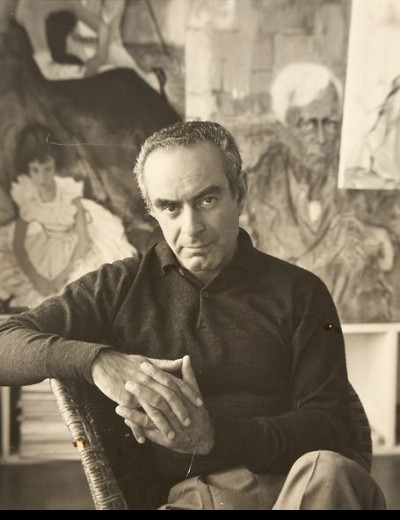
René Bouché
About
Rene Bouche was born in France in 1906. His family were Czech emigrants.
A successful painter and portraitist, Bouche made significant contributions to Vogue both before, during and after World War II as a fashion illustrator and observer of fashionable society. He came late to the craft and was already in his mid-30's when he persuaded Vogue to give him a chance. In 1939, his work was used editorially in French and British Vogue, and he also produced one of the prettiest covers of the year, a milliners shop full of summers bows and flowers, ribbons and laces.
At the outbreak of war, he joined the French army, fought through until the fall of France and in early 1941 reached New York. Here his career effectively began and he was established as a regular and expected contributor to American Vogue.
In 1947, Bouche taught illustration at Parsons School of Design in New York. Parsons maintain archives of his drawings for research purposes.
Bouche illustrated the pages of Vogue throughout the 40's, 50's and early 60's, communicating the relationship between clothes and their wearers with accuracy and humour.
In 1956 Bouche sketched a young Sammy Davis Jr. for Vogue calling him "a meager sharp fellow, crammed with talent."
He went to Japan in 1957 and in the detailed feature shown below, sketched the two hour make up ritual of Geisha girls in Kyoto. There has always been a place in Vogue for exotic travel tales like this.
By 1958, Rene Bouche commanded the field at Vogue but he lived on for a bare five years to enjoy his seniority.
In April 1962 TIME magazine put on the cover, a beautiful painting that Rene Bouche had made of Sophia Loren.
At the early age of 57, Bouche died suddenly in England in July 1963. Vogue published his obituary written by William S. Lieberman, Curator of Prints and Drawings at the Museum of Modern Art in New York. He said "Bouche in his narrow field developed superbly and became a master of social portraiture."
Bouche's death seems to have marked the moment when Vogue's heart set itself against drawings to illustrate fashion. After his death, no further fashion drawings appeared in American Vogue that year, or indeed for a long time afterwards.
The Look
Initially his work was black and white, firmly and accurately drawn, and frequently spread across a double page of Vogue. He gave powerful and memorable images, especially when allowed the luxury of a sequence of colour plates to indulge his colourful and romantic images. He worked in pen and ink or crayon, skillfully blending the character of the dress with that of the wearer. His drawings of women were elegant, vibrant and often amusing. He was able to vary his style to produce a less defined, more abstract form.